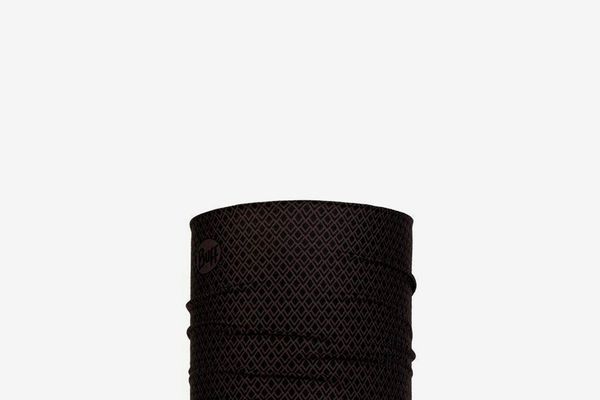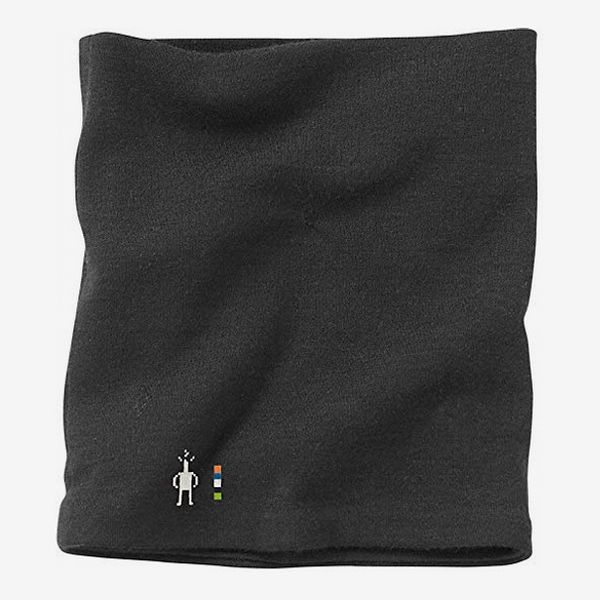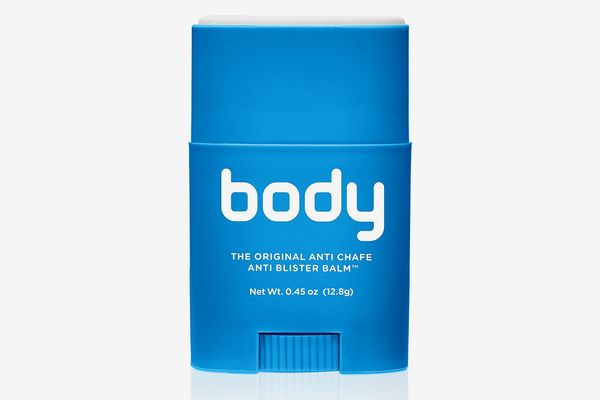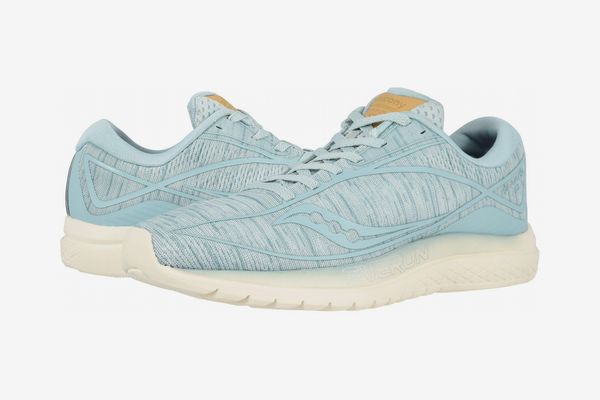
I am a year-round runner. Polar vortices and full-on downpours don’t deter me. And I’m not even especially crazy: Through trial and error and a stint working in a specialty running store, I’ve simply built out a running wardrobe that’s ready for any weather. And in the right outfit, bad conditions are almost irrelevant.
I’ve done this by organizing my arsenal of gear around temperature, moisture management, and layering. First up: In deciding what to wear, temperature is the most obvious factor to consider. Personally, I warm up very quickly on a run, so I follow a rule of dressing as if it’s 20 degrees warmer than it actually is outside. This means I accept feeling cold for the first five minutes of my run as a trade-off to overheating on the first mile of a several-mile run.
Next, you’ll want to manage moisture. This includes both the sweat coming off your body and any external moisture like snow or rain. You want to keep your skin as dry as possible to help regulate your temperature. I sweat a lot, so moisture-wicking fabrics — such as synthetic blends of polyester, nylon, and spandex — are allies in my war against chafing. If you want to keep it all-natural, choose wool, which actually wicks moisture well, but avoid cotton, which will leave you feeling soaked.
And finally, layering. All running outfits are built out of some combination of three types of layers: base layers, to keep sweat away from your skin; middle layers, to insulate you from the cold; and outer layers, to protect against elements like rain, snow, and wind. I might wear all three layers on an ice-cold day with biting winds but only a base layer on a mild day. But I have tried-and-true combinations for every kind of weather in between, and they are as follows.
Mild days (50 degrees to 65 degrees)
When the temperature dips below 60 degrees or the wind starts to blow, I’ll reach for a short-sleeved shirt for some shoulder coverage. I’ve worn Lululemon Swiftly tops (this one as well as the long-sleeved and tank-top versions) on everything from casual jogs to full marathons. They are soft to the touch, lightweight, and sweat wicking, and they come in new colors every season. This “relaxed” style has a loose fit, so it looks more like a casual T-shirt than a skintight running shirt.
These shirts are so comfy and come in such unique colors that I’m tempted to wear them even when I’m not running. The fabric feels like jersey and just glides over the skin. The almost drapey fit makes them incredibly comfortable.
Yes, it’s a tank top, but since it’s made from merino wool and is thicker than the tanks I wear during the summer (more on those below), I actually prefer to wear this top when it’s chilly. It’s also got a high neckline, which looks surprisingly stylish for a running shirt and gives you more coverage on windy days.
This may be completely psychological, but I think when the weather’s verging on too cold for shorts, fitted styles like these are warmer than loose ones since they allow for less airflow. These are thin enough, though, that you’ll never overheat. I also love the generously sized pockets, which fit my phone, keys, and some energy gels.
Thicker than the Lululemon shorts above, these might not be appropriate for the hottest days, but they’re perfect for this in-between weather. As the name suggests, they have tons of pockets for carrying everything you need and more. These are out of stock in a few colors, but you can try the longer version as the weather cools down.
When I worked at the running store, most people didn’t believe running socks were worth more than $10 for a single pair when you can get a six-pack of cotton socks for the same price or cheaper. And I get it — when I started running, I felt that way too. But over time, like most of my customers, I realized that specialty socks are worth every penny, for one reason: They prevent blisters. A wet, sweaty sock creates friction and rubs against your foot, leaving you with painful open blisters. Suck it up and buy socks made of moisture-wicking material, and that won’t happen. When it’s neither too hot nor too cold, opt for mid-weight socks, like this Bombas pair. They’re soft, come in fun colorways, and offer support around the arch. They’re also moisture-wicking, so you don’t have to worry about blisters.
Chilly but not cold (40 degrees to 50 degrees)
Like the Harrier tank top above, this is a good choice if you prefer natural over synthetic fabrics. Made from merino wool, the shirt is so soft and cozy it makes me excited to run even on days when getting out of bed is a struggle. Tracksmith has a New England prep-school kind of aesthetic, so these shirts are stylish enough to keep on for a post-run errand or meal.
Made of the same material as the short-sleeved version, this is a lightweight long-sleeved top for days when you’re on the fence about going long or short. It won’t be as toasty as the Harrier, but it’ll cut the wind and you won’t feel frigid as you warm up, as you might if you wore a T-shirt.
Depending on how well you tolerate the cold, it may be time to retire your shorts for the season and break out the cropped tights. I started wearing these in the past year, and now I have them in three different colors. Like the Fast and Free shorts, they’re so thin and stretchy they feel like a second skin.
Here’s a thicker (yet still stretchy) pair of Capris with a wide waistband to hold everything in and plenty of pockets.
When it gets colder, I like a thicker sock. Balega’s feel truly luxurious since they have very plush cushioning underfoot. I also love collecting all the fun colors.
Legitimately cold (30 degrees to 40 degrees)
Once it hits 40 degrees, it’s finally cold enough for me to add a mid-layer. Lululemon does a really good job on its mid-layer tops because they have features that let you adjust for changing conditions. The built-in mittens fold back if you don’t need them, and a half-zip provides adjustable airflow when you’re heating up or cooling down. This helps me rationalize spending too much money at Lululemon, since I’ll wear this jacket in a wider range of temperatures than one without all the bells and whistles.
I have to admit I bought this because I thought it looked cute, and I was ready to wear it casually as a sweatshirt if I didn’t like running in it. So I was surprised when it turned out to be a very functional, and very warm, running top. You could layer it with just a T-shirt in these temps and still feel plenty warm thanks to the quilted fleece.
It’s time to swap out the crops for full-length tights. I’m short, so I appreciate when running tights come in different lengths and then don’t need to be hemmed. These tights have a snug fit that feels supportive on my running muscles and come in petite, regular, and tall lengths.
Another old favorite from Tracksmith. I originally tried these as a sample from the brand and went on to buy another pair with my own money. They aren’t the warmest tights I’ve worn (more on that below), but they’ll be totally fine when it’s hovering around freezing. They feel softer and fleecier inside than the Fast and Free tights, so if you’re getting chilly in those, these would be a good swap. They are also incredibly flexible and have no inner-thigh seams that could rub or chafe.
It’s essentially just a tube of fabric, but a Buff can be worn 12 ways, according to the packaging (I’ve personally used it as a neck-warmer, face mask, and even a beanie) so it’s a little miracle-worker in cold weather. Since it’s so minimal, you can stash it in your pocket as you warm up on the run or if the sun comes out.
Convertible glove-mitten hybrids are awesomely multifunctional. For most of the winter, I’ll wear just the liner gloves (with smartphone-friendly fingertips!) until it gets super-cold, when I’ll flip the mittens over the gloves.
Below freezing (20 degrees to 30 degrees)
Every fall, the arrival of the first shipment of Craft base layers generated a palpable level of excitement among my running-store co-workers. This cult favorite lasts forever and will be your staple base layer all winter. The thermal material is ideal for locking in warmth.
If I could recommend only one product for surviving winter, it would be a pair of these tights. With fleece lining on the inside and a weather-resistant exterior, the MidZero tights make winter running possible.
Please be aware that this article is a bit of a Sugoi MidZero lovefest, as I adore the brand’s entire range of thermal products — including this mid-layer that provides next-level warmth.
Although I usually wear no-show socks, I like going crew-length in colder weather to close any gap between my tights and my feet. I’ve made the mistake of not wearing long-enough socks and ended up with a ring of red, wind-bitten skin on each ankle. Since these are wool, they keep my feet and ankles toasty without soaking up sweat.
The oft-quoted statistic that 50 percent of your body heat escapes from your head has been debunked, but regardless, covering your head is going to keep you warmer on a run. I love how this cap has an additional layer around the brim to keep the wind from wreaking havoc on my ears.
Frigid and forbidding (0 degrees to 20 degrees)
If you want a heavier base layer, go with this merino-wool turtleneck that’s thin yet toasty. You might be tempted to pile on more layers when it’s this cold out, but I’d advise just using warmer base layers. It’s uncomfortable to run in lots of heavy jackets, and you’ll probably warm up faster than you expect.
Brooks consistently churns out warm hoodies that work for both running and casual weekend wear. I have an older version of this jacket that’s still in great shape, and I’ll pull it out on especially cold days.
These are even warmer than the MidZero tights! I’d advise trying them on in person because the thicker material makes them more rigid (but still totally comfortable to run in), which not everyone likes. If you live in a frigid climate or feel cold in other tights, though, they’re worth the price. The “zap” in the name refers to reflective paneling that ensures you’re visible to cars and others on the road — which is essential for winter days when it’s dark at your normal running times.
Can we discuss butt freeze? If you’ve ever run in very cold weather only to come home to a hot shower and have the water burn your ice-cold behind, you know what I’m talking about. Icebreaker’s wool underwear is lightweight and breathable but offers added warmth for my backside, especially when paired with my MidZero tights. If you want to think in layering terms, you’re adding underwear as a base layer, and your tights are now your mid-layer.
You’re probably sensing a pattern of piling on more and more wool layers as it gets colder. I like this gaiter for keeping my neck warm and making breathing in cold air less painful.
Only lunatics are out running now (Below 0 degrees)
Just like the Icebreaker underwear above, these prevent cold butt while providing extra thigh coverage and are made of my favorite fabric.
In extreme temperatures, an outer layer over your tights may be necessary. Brooks Threshold pants are a longtime favorite among running-store staffers since they’re warm and soft yet still flexible and stretchy enough for comfortable running.
People will call you crazy for running in this weather anyway, so you might as well embrace the bank-robber ski-mask look. With nearly full face coverage, this wool balaclava guards against cold air and warms up the air I’m breathing in before it hits my lungs.
Rain
If it’s raining but warm out, the only adjustment I’ll make to my running outfit is to add a hat to keep the rain out of my eyes. This minimal, affordable cap gets the job done.
I also like to keep my rain jacket simple — it’s essentially just an outer shell to keep the rain from getting through. I love this packable jacket, since it’s easy to throw in my bag if I’m traveling for an out-of-town race and am not sure what the weather will be. It helps me stay dry without adding bulk.
Here’s another lightweight, packable jacket. These tend to go on sale regularly as new colors are introduced.
Snow and ice
If you live in a very cold place where it snows every day all winter long, buy this now. It’s totally waterproof, so you’ll stay dry while your mid-layers keep you warm. On the other hand, if there are only a few snowy days where you live (or if you’re a sensible person who retreats to the treadmill in blizzard conditions), I’d say wait for it to go on sale. I have an older version of this jacket, and I have to say it’s probably one of my least-worn pieces of running gear, not because I don’t love it but because I don’t have many opportunities to wear it. When I do head outside mid-blizzard, though (because I am not a sensible person), it’s completely indispensable for stopping snow from soaking through. It also has reflective details, so it’ll be easier for cars to spot you on predawn runs or when a storm limits visibility.
The one weather condition I used to refuse to run in was ice. I’m clumsy to begin with, so slippery ground is a recipe for a twisted ankle, skinned knee, or worse. Yaktrax are the only things that give me the confidence to run on ice. Like the snow chains that attach to tires, Yaktrax cleats fit over the bottom of your running shoes for reliable traction on icy ground.
If you regularly run on trails or in very icy, slushy, or muddy conditions, it’s worth checking to see if your favorite shoe (I’ve listed some of mine below) comes in Gore-Tex, the lightweight, waterproof material found in all kinds of outdoor gear. These shoes are more rugged and durable than their standard versions.
Hot and sunny weather (65 degrees and up)
Just like the short-sleeved Swiftly, this top is a workhorse that gets me through most of the summer. I like to stalk Lululemon’s sale section for deals on older seasons’ colors, like this teal one.
I picked up this tank top (in hot pink) on a whim this summer, and it has quickly become the first shirt I reach for on hot days. The little perforations allow for airflow, as does the tank top’s relaxed fit. It doesn’t cling to your body, which is especially nice on very hot days. Plus, the material is very soft to the touch.
I’ve written about these shorts before, and they’re still one of my favorites for hot days. I love the smooth material and color selection. Thanks to the short inseam and notches on the outer sides, they don’t restrict your movement at all and are barely noticeable while you’re running.
If you want something cheaper than the Tracksmith pair, I’ve recently fallen for these Brooks shorts. I’m slowly replacing all of my Nike Tempo Track shorts (I still highly recommend these, but my very old pairs were starting to get stretched out), and these are like an upgraded version of those. The material is lightweight and silky; the inseam is a not-too-short, not-too-long three inches; and they have a wide, supportive waistband as well as side slits for easy striding.
Another very light pair of shorts, these feel made for going fast (or not so fast) on hot days. While all of my shorts have flat seams (for minimizing chafing), these feel basically seamless and never need adjusting during the run.
I resisted wearing running sunglasses for a long time, thinking they’d bounce around and annoy me. That all changed when I tried a pair of Tifosi shades. They weigh next to nothing and fit snugly around the temples and nose bridge, so they don’t move around at all. On several occasions, I’ve actually forgotten I was wearing them. They’re also good for winter days when the sun is bouncing off snowy streets.
I always choose flat-seamed and seamless garments to avoid chafing, but if I run far enough — especially in hot weather — I’ll need a little something extra to protect my skin. Swiping Body Glide on areas I normally chafe (inner thighs and underarms) works wonders. Vaseline will work in a pinch, but Body Glide is much less greasy.
If your feet tend to sweat a lot, get these exceptionally thin Feetures socks. They have an anatomical design, too, which offers gentle compression around the arch.
Shoes for all weather
These are one of my favorite pairs of running shoes for any kind of weather, because they have lots of soft foam underfoot to absorb impact before it gets to my joints. Saucony has been making the Triumph for over a decade. It has always been a favorite among runners who want maximum cushioning, but five years ago Saucony revamped it with new technology that cut down on its weight without losing any softness.
The Ride is similar in shape to the Triumph but with less squishiness, so you feel bouncier on the roads. I really enjoy wearing these on my daily runs and they’d be fine for most people. I’d opt for the Triumph if you’re prone to injuries, just for the extra cushioning.
I received a free pair of these at a press event, but it’s really surprising that I hadn’t tried the Ghosts earlier, since they’re a longtime staple in Brooks’s shoe lineup. Like the Ride, they have a medium level of cushioning but offer more arch support, which is nice if you have a higher arch. The foam is slightly firmer underfoot, but you’re definitely still getting plenty of protection from the pavement. Since I don’t overpronate (meaning my foot doesn’t roll excessively inward as I run), all the shoes on this list are neutral (compared with stability shoes, which feature dense foam on the inner side of the shoe to prevent overpronation). But the arch in these offers a tiny bit of stability if this is sometimes an issue for you. I recently ran a half-marathon in them, and my feet felt fresh afterward.
These were also a press gift, and I almost didn’t even try them, because I haven’t personally loved Asics shoes in the past. Each brand uses its own last (or mold) to model its shoes on, and since I have a wider foot, I’ve always liked the fit of Brooks and Saucony, both of which use a wider mold. I’ve always thought Asics were too narrow, but I found I actually liked the snug fit of these. Asics shoes also use gel for cushioning, which is firmer than foam. Neither is better; it’s just a matter of which you prefer.
On the opposite end of the cushy spectrum from the Triumph (the Ride would be in the middle), the Saucony Kinvara is a very lightweight, very bouncy shoe that I like for shorter races like 5Ks and 10Ks. They’re definitely still soft, but they have a springier feel that’s nice for faster running.
The Strategist is designed to surface the most useful, expert recommendations for things to buy across the vast e-commerce landscape. Some of our latest conquests include the best women’s jeans, rolling luggage, bed sheets, coffee makers, and bath towels. We update links when possible, but note that deals can expire and all prices are subject to change.
Every editorial product is independently selected. If you buy something through our links, New York may earn an affiliate commission.






















































